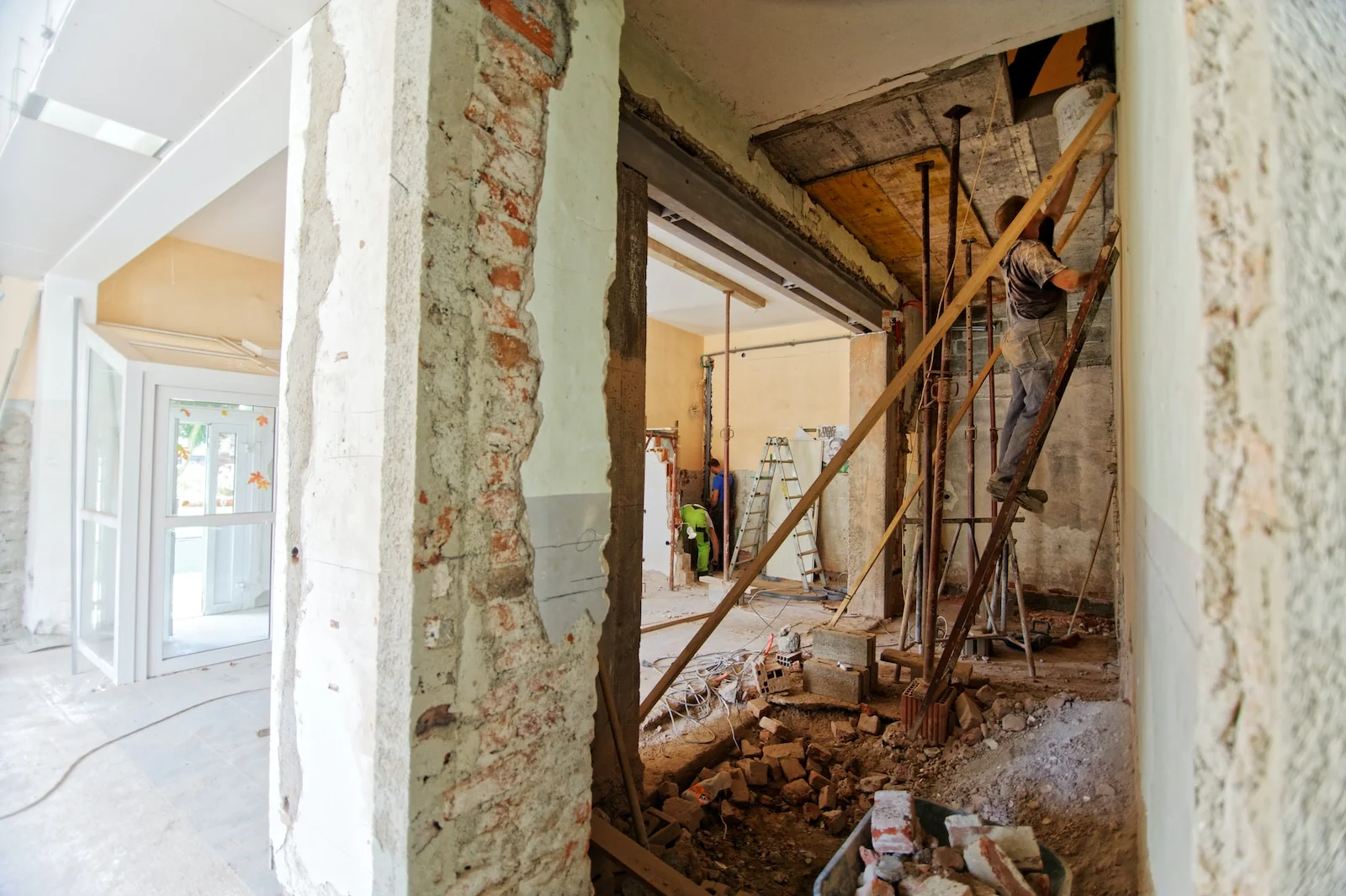UPDATED: AUGUST 21, 2023 | 3 MIN READ

House flipping, the process of buying, renovating, and then selling a property for profit, might look glamorous on our TV screens, but it’s far from the glitzy, problem-free venture we’re often shown. It’s a business that involves a huge amount of time, money, and risk. The good news is that risks can be mitigated, particularly through the right kind of insurance. However, first, you need to understand what kind of insurance you need (and why).
The reality of house flipping
If you’ve ever been drawn into a house-flipping show’s narrative, you’ve likely seen the dramatic transformation of a dilapidated property into a dream home. But the many challenges behind the scenes – from paperwork to budgeting and unforeseen repair issues – often remain hidden.
The reality is house flipping is a serious business. And for anyone putting such a significant investment into a project, protection through insurance isn’t just recommended; it’s vital.
What type of insurance coverage do you need for flipping houses?
Imagine you’ve bought your fixer-upper and are ready to dive into renovations with hopes of a quick sale and profit.
But hold on – does your homeowners insurance cover this venture?
The answer is no. House flippers require a unique set of insurance policies:
- Builder’s risk policy: As the name suggests, this is for homes undergoing construction.
- Liability insurance: This covers any injuries or accidents on the property.
- Vacant home policy: For those instances where the renovated home isn’t immediately occupied.
Why traditional homeowners insurance falls short
Homeowners insurance protects your primary residence – the place you live. It isn’t tailored for houses in a state of disrepair or undergoing extensive renovations.
Moreover, the risks associated with flipping (like ongoing construction and various workers coming and going) differ significantly from a standard occupied home.
Understanding builder’s risk coverage
If you’re flipping a house, think of the builder’s risk coverage as your primary safety net. It’s specifically for properties under construction.
This insurance typically covers disasters like fires, storms, and even incidents like theft or vandalism. Additionally, many policies offer add-ons to cover equipment and building materials.
Make sure to insure the property for its after-repair value. If disaster strikes mid-renovation, you’ll want compensation based on the home’s projected value post-repairs, not its original purchase price.
The role of general liability insurance
While builder’s risk coverage looks after the house itself, general liability insurance protects you from incidents involving people on the property.
Whether it’s a contractor injury or a neighbor tripping over a misplaced tool, this insurance covers medical costs and legal fees.
And the best part?
It’s relatively affordable – often priced between $25 and $50 monthly.
Prepare for the in-between with vacant home insurance
Once the dust has settled and your renovations are complete, there might be a period where the home sits vacant.
Whether you’re waiting for the right buyer or prepping for a move-in, vacant home insurance steps in where builder’s risk insurance bows out.
Unoccupied homes are prime targets for vandalism and other issues that can go unnoticed (like leaks), so this insurance serves as your safety net.
Is insurance for flipping houses hard to find?
It’s worth noting that not every insurer will jump at the chance to cover you if you’re flipping houses. The very nature of the venture – with many stakeholders, contractors, and a flurry of activity – can make it look risky.
For instance, while you might hire licensed specialists for plumbing and electrical work, what if you bring in a friend for carpentry? For many insurance companies, the unpredictability and the numerous people involved make house flipping challenging to insure.
But it’s not impossible. Look for companies specializing in builder’s risk and vacant home insurance to cover your properties.
FAQs
How do you insure a home you’re going to flip?
When insuring a home you’re going to flip, you need specialized insurance policies tailored to the risks of flipping. Traditional homeowners insurance won’t suffice, as it’s designed for primary residences in livable conditions.
Throughout the process, you need the following:
- Builder’s risk policy: Covers potential damages during the renovation phase, safeguarding the structure against events like fires, storms, theft, or vandalism.
- General liability insurance: Protects against any accidents or injuries occurring on the property.
- Vacant home insurance: Covers you after the construction is complete and before the house is sold.
Why is flipping houses risky?
Flipping houses is risky because it involves multiple variables that can be unpredictable. Flippers must accurately estimate repair costs, timelines, and final market values while navigating potential unforeseen issues like structural problems, hidden damages, or costly permit and zoning complications.
Market fluctuations can impact the eventual sale price, and prolonged holding times can increase costs, diminishing profit margins. Moreover, renovations can lead to further damages or legal disputes if not done meticulously.
What is the 70% rule in house flipping?
The 70% rule in house flipping is a guideline that seasoned real estate investors often use to quickly assess the viability of a potential property investment.
According to this rule, an investor should pay no more than 70% of the after-repair value (ARV) of a property minus the costs of necessary renovations.
Find the insurance you need
Flipping houses is often risky. You need insurance to protect your investment. Use our online quoting tool to compare rates from multiple companies in minutes.
Related content: